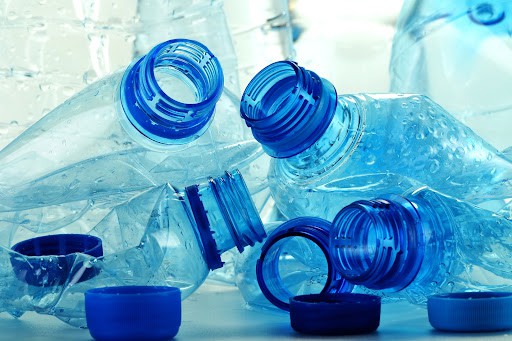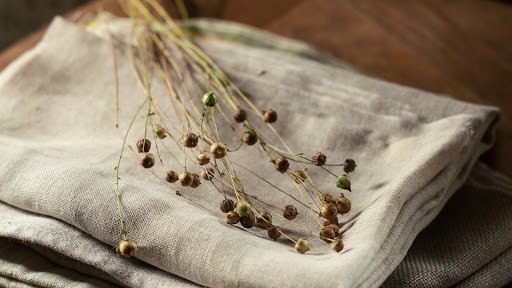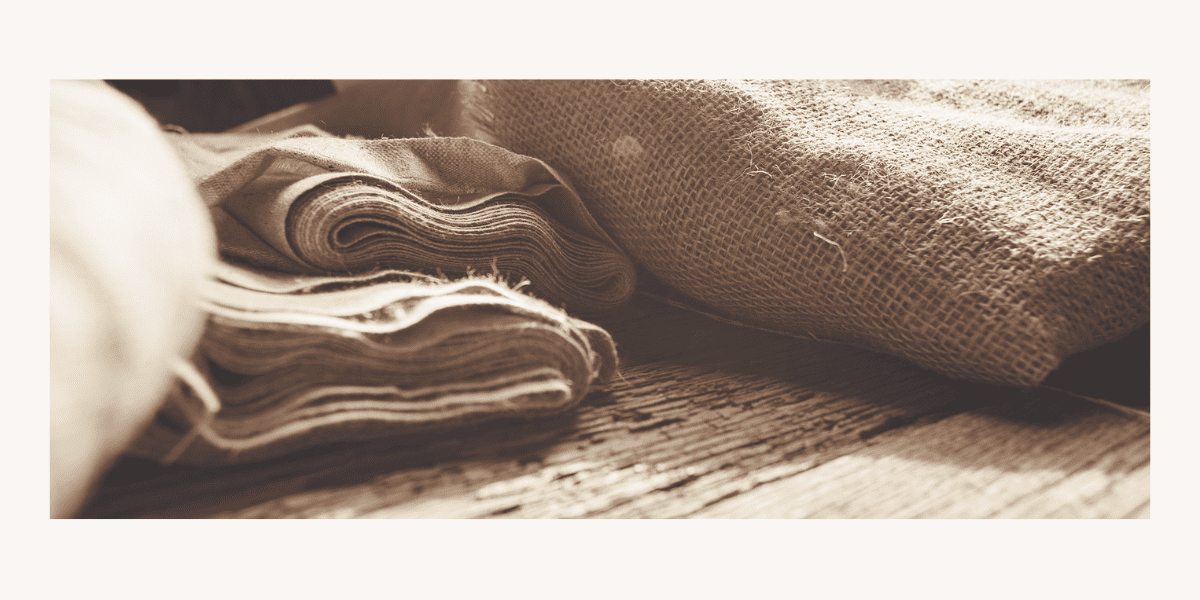EDITOR’S SUMMARY: It’s easy to miss the obvious—important aspects of your life that get overlooked, such as the quality of your clothing. Worn daily, touching your skin, and impacting your health. There’s more than meets the eye to these garments you wrap around yourself. Your threads are significant enough to merit further investigation.
By Liz Quinn
Considering on average you spend 16 to 24 hours a day in clothing, and your skin is your body’s largest organ, it’s worth taking a closer look at what goes into the fabrics you adorn yourself with. If you’re curious about the types of materials you keep in your wardrobe, and wondering how they affect your health… stay with us.
Alden Wicker, author of “To Dye For: How Toxic Fashion Is Making Us Sick and How We Can Fight Back,” was interviewed in 2023 for EcoWatch. Here’s what she had to say about safety taking a backseat to profits early on in the textile manufacturing industry:
‘“The thing is, people profited so enormously off dye manufacture for textiles that, the guy who actually invented mauve, he ended up getting out of business because he felt so uncomfortable with it,” Wicker said. “And we’ve seen throughout history, not just in the history of dye manufacture and fashion manufacturing, but in other types of manufacturing… people will do anything, corporations will do anything to stuff down any evidence that this is causing harm, even when it’s right in their face.”’
‘“The dye manufacturers in Germany and Switzerland, and then in the United States, would do the same thing over and over again, they would discover that there was bladder cancer in their employees, they would ask somebody reputable to study it, then they would take those findings and hide them, and keep doing what they’re doing for another decade.”’
Synthetics and Plastics
Two of the most common materials currently used in clothing are polyester and cotton. When it comes to worldwide fiber production, synthetics make up 65 percent versus natural fibers’ 35 percent. Polyester, one of the most-used synthetic fabrics, is traditionally derived from petroleum, using hefty amounts of crude oil during manufacturing, and producing hazardous environmental substances with its waste water.
A newer trend in polyester production is the use of recycled plastic bottles. While saving plastic from landfills is appealing, turning it into a product that sits against your skin for hours on end may be less than ideal.
This is particularly true for parents trying to minimize the presence of plastic in your kids’ early developmental years. Since plastic is known for leaching estrogenic toxins, especially when heated, it’s reasonable to wonder if those same toxins could be released when formerly-plastic-bottle clothing rubs up against a warm body for an extended amount of time.
A University of Texas study found that even BPA-free plastics leach estrogen-mimicking chemicals. The health concerns of such chemicals include early puberty in females, reduced sperm count, altered function of reproductive organs, obesity, altered sex-specific behaviors and increased rates of some breast, ovarian, testicular, and prostate cancers.
As anyone searching for kids’ pajamas can attest, polyester is generally easier to find than cotton. Aside from cost and ease of care, one reason for this is an oldie but perhaps no longer a goodie.
In the mid-’70s, before smoke detectors were required in homes, Congress legislated that children’s pajamas be flame resistant. Polyester is naturally flame resistant, requiring no chemical flame retardants, unlike flammable cotton. It’s worth weighing the concern of flammability of kids’ pajamas against the more current issue of ubiquitous plastics and chemicals in their lives.
In 2021, a small study by the NYU School of Medicine showed that babies had 10-20 times the concentration of microplastics in their feces than adults. As the study’s lead researcher and pediatric professor Kurunthachalam Kannan stated:
“Human exposure to microplastics is a health concern . . . We need to make efforts to reduce exposure in children. Children’s products should be made free of plastics.”
While baby items like bottles come to mind as the primary target of such a statement, the study’s finding should prompt enough concern to merit a long-missing study of the potential effects of plastic-derived fabrics on children, especially considering that their sweaty little bodies spend more time asleep in pajamas than adults.

So, Cotton, Then?
Cotton is indeed a natural fiber, but the invasive growing process, and the method in which it’s manufactured into clothing, can be far from “natural.” As a crop, conventionally-grown cotton is one of the most insecticide-intensive crops, accounting for 16% of the world’s insecticide market while taking up a mere 2.5% of its arable land.
When it comes to cotton, 7 of the 15 frequently-used pesticides are listed as some type of carcinogen, ranging from “possible” to “known.” Toxic chemicals are also used as defoliants—removing the leaves from trees and plants—in preparation for harvesting.
Shop ethical sourced from Pesticide Action Network North America:
“Conventionally grown cotton uses more insecticides than any other single crop and epitomizes the worst effects of chemically dependent agriculture. Each year cotton producers around the world use nearly $2.6 billion worth of pesticides — more than 10 percent of the world’s pesticides and nearly 25 percent of the world’s insecticides.
Cotton growers typically use many of the most hazardous pesticides on the market including aldicarb, phorate, methamidophos and endosulfan. Cotton pesticides are often broad spectrum organophosphates — pesticides originally developed as toxic nerve agents during World War II — and carbamate pesticides.”
Then there’s the bleaching process, which is often done using chlorine. The good news is that the processing often bleaches or washes out much of the pesticides and herbicides. The bad news, especially if you’re living near a processing facility, is that as the water washes the toxins away—whether on the crops themselves or during manufacturing—they drain straight into the groundwater.
According to the Organic Consumers Association (OCA), 90 percent of municipal water treatment facilities in the U.S. lack equipment to remove these chemicals, resulting in some 14 million Americans drinking herbicide-contaminated water.
Before you give up hope and toss out all your polyester and conventionally-grown cotton clothing, let’s take a look at other options. After all, the average American throws away approximately 80 pounds of clothing, mostly low-cost, non-biodegradable items. So, what’s a concerned clothing-wearer to do?
Lesser-Known Materials
Hemp is one of the more sustainable, earth-friendly fabrics. Although it does use land and water, it yields nearly twice the amount of fiber as cotton in the same space, and uses about a third of the water. Hemp is durable, breathable, and can necessitate fewer chemicals in the dyeing process because it holds color well.
Hemp also becomes softer with use, and unless blended with synthetic fibers, is biodegradable—it breaks down to its natural base by bacteria, fungi, or other natural biological processes. The biggest downside to hemp is that it can be expensive, and some think the material is rough compared to other fabrics. It may also be blended with other materials to make it softer, easier to care for, and more affordable.
Bamboo, as natural as it sounds, isn’t necessarily an environmentally-friendly fabric. It is fast-growing, easily repopulates, uses little water, and removes carbon dioxide from the air. However, if the material is bamboo rayon or bamboo viscose, the bamboo is processed using toxic chemicals that often end up in the air or water, as most of them cannot be recycled.
A better choice is lyocell (or TENCELⓇ), which is a semi-synthetic fabric that comes from plant pulp, most often eucalyptus, and is processed into fabric using nontoxic solutions in a closed-loop system so it doesn’t create toxic environmental waste.
As long as the lyocell isn’t blended with synthetic fibers, it’s fully biodegradable, too. It’s breathable, easy to dye, and uses 20% less water during production than cotton. If you don’t mind the higher cost and delicate care it can require, lyocell is one of the healthier choices for both the environment and the human body.
Linen is one of the most environmentally-friendly fabrics available. It’s made from flax, which requires no pesticides or fertilizers and grows very quickly. Like bamboo, the flax plant removes carbon dioxide and uses nearly one-third less water than cotton.
The entire plant can be woven into fabric, leaving virtually no waste. Linen is a great choice for sensitive skin, is naturally antibacterial, and is breathable during hot weather but also thermoregulating during cold weather, keeping you warm.
Linen becomes softer as it’s used, and it biodegrades quickly, unless certain dyes are used in its manufacturing. The downside is the cost, wrinkles, and non-stretchable fibers, so the clothing can become brittle over time. Although flax needs no fertilizer or pesticides, some farmers still spray flax to increase its growth. If you want to be certain to avoid the chemicals, wear organic linen only.
Prioritize Organics
In general, it’s best to choose organic as often as possible. Organic cotton is grown without the use of pesticides and insecticides; it’s harvested without defoliants, and if it’s bleached, it’s done with hydrogen peroxide rather than chlorine.
While organic is the best bet for your health, and the planet’s, organic cotton makes up only 0.95% of all cotton worldwide, so it’s harder to come by and more expensive. Transforming your wardrobe to all-organic is far from doable for many people, so a more realistic approach would be to prioritize which fabrics are worth the price of organic.
Based on the amount of time you spend (or should spend) sleeping, warm under the covers, a solid argument can be made for choosing organic cotton pajamas, especially for children. Fortunately, kids’ organic PJs are fairly easy to find, and available at many accessible retailers today, including Target and Walmart.
Look to Labels
Improvements can always be made in terms of knowing exactly what’s in your clothes, and there are more helpful labels now than ever before.
OEKO-TEXⓇ is an organization of 17 independent institutes in Europe and Japan whose labels can help point the way.
OEKO-TEXⓇ Standard 100 is a label indicating a product has been tested for a long list (over 100 as of date this article was written) of potentially harmful substances, among them, dyes, pesticides, heavy metals, and PVC.
This designation includes verification that every part of a product, from buttons to zippers, trims to prints, is free from the hazardous materials on their list. Products with this label must be tested yearly in order to be recertified.
Made in Green by OEKO-TEXⓇ goes one step further. Any product with this label has passed the Standard 100 guidelines and additionally, assures you the product has been “manufactured using environmentally friendly processes and under socially responsible working conditions.” It also allows for tracking the supply chain by scanning the item’s QR code, or entering its ID on the OEKO-TEXⓇ label check website.
Another sought-after label is GOTS, or Global Organic Textile Standard. To obtain GOTS certification, a fabric must be made from 70-95% organic fiber. This label also requires certain standards of packaging, labor practices, residue testing, and that wastewater treatment be done before water is discharged to the surface from a facility.
If you’re interested in sustainable clothing that’s organic with fair trade practices, there are companies dedicated to this trifecta. One such company is Indigenous, offering women’s and men’s clothing from sustainable sources with responsible, ethical work practices.

Parting With Your Old Duds
If you decide to replace some of your clothes with organic fabrics, or if they’ve had their fair share of wear and tear, one way to keep your clothes from contributing to the aforementioned 80 pounds of discarded garments is to recycle them.
Programs like Retold Recycling will take your old clothes and textiles—including rags, dishcloths, and sheets—off your hands for a fee. They claim that no items end up in the landfill. Other programs and suggestions for recycling clothing are also available.
Looking to the future, organic textile sourcing, such as organic cotton farming, will likely still be challenging, a reality the Sustainable Cotton Project (SCP) is trying to address with pragmatic strategies.
The California-based group is working with farmers who share an interest in what SCP has dubbed Cleaner Cotton™. Rather than growing certified organic cotton, an expensive and difficult endeavor for farmers that yields considerably less cotton (by almost 30%), Cleaner Cotton™ is grown using sustainable and biologically-based practices, disallowing the use of the most toxic chemicals in conventional cotton production.
This program creates a happy medium for farmers who are concerned about health and the environment, but perhaps cannot afford to go fully organic. While there’s no easy fix for all the potential health and environmental issues from everyday fabrics, there are ways to mitigate both toxin exposure and your expenses. Check for trusted labels and prioritize which organic items to splurge on for your family and the planet.
~
Published on June 22, 2023.
If you’d like to contact A Voice For Choice Advocacy, please email media@avoiceforchoice.org.
If you would like to support the research and health education of AVFC editorial, consider making a donation today.

